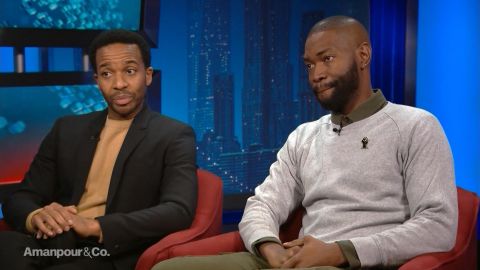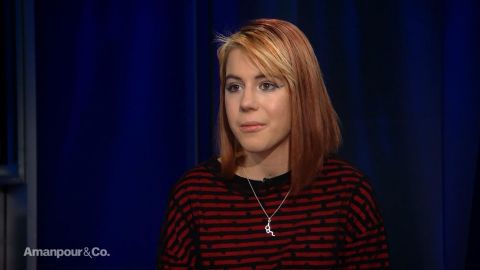Read Transcript EXPAND
CHRISTIANE AMANPOUR: The trailer we saw had this rather profound statement from you, in that something like, “I wanted to photograph the beauty of nature and now I realize I have to bear witness to, you know, this sort of calamity.” Expand on how you’re photography and what you see through the lens how that has changed?
JAMES BALOG: Well, I’ve been doing this sort of work for about 40 years as an environmental photographer. And as time has gone on, I keep witnessing more and more situations where nature clearly isn’t natural, where the power of homo sapiens, the human race is altering what we see out there on the world, we’re altering the earth, we’re altering the air, the water, the plants and the animals. And the more of that that I saw, the more I realized I needed to bear witness to that and not just hide behind beautiful nature pictures and romantic idealism.
AMANPOUR: So, your film talks about — well, it’s called “The Human Element.” And I gather that that is the 5th element of the earth’s four elements, which are earth, wind, fire, ice, I think, and air. Tell me about how quickly these changes are happening and how you notice that through your work?
BALOG: Well, you know, this idea of earth, air, fire and water goes back thousands of years, many cultures have had that notion. And the understanding in modern science, this idea of the Anthropocene, namely that we’re leaving our imprint in the fabric of the rocks and the soil beneath our feet is what really has helped to bring this story alive. We have seen the way things are changing, we have seen that it’s urgent, we have seen that it’s happening right now. And, of course, climate change is one of the more visible and obvious manifestations of that profound impact. And I’ve come to realize that climate protection equals people protection, and I’m sure we can come back to that later.
AMANPOUR: Well, no, I think that’s really important because I think some people, those who don’t believe in climate change or don’t believe in the human element to climate change need to understand that it’s about protecting people as much as protecting, you know, the civilization. So, you start the film in Iceland, I believe, with this whole time-lapse photography and the ice time-lapse you did. What were you achieving there and what surprised you about that?
BALOG: Well, I have been to Iceland many times and seen the way these big glaciers were breaking down and the water was converting from its solid state on the glaciers to a liquid state in the ocean. And we went to Iceland for the film in order to simply bring that alive through some new pictures that I hadn’t done yet.
About This Episode EXPAND
Christiane Amanpour speaks about climate change with Jay Inslee, the Governor of Washington; Anna Taylor, an environmental youth activist; and James Balog, an environmental photographer. Michel Martin speaks with Tarell Alvin McCraney & Andre Holland, the screenwriter and executive producer of “High Flying Bird.”
LEARN MORE



